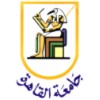Robotic Hand on Hand Functions in Strokes
Primary Purpose
CVA (Cerebrovascular Accident)
Status
Active
Phase
Not Applicable
Locations
Saudi Arabia
Study Type
Interventional
Intervention
Robotic
Mirror
Traditional Physical Therapy
Sponsored by

About this trial
This is an interventional treatment trial for CVA (Cerebrovascular Accident) focused on measuring Stroke, Hand Grip Strength
Eligibility Criteria
Inclusion Criteria: Spasticity level 1 or 1+ according to modified Ashworth scale Exclusion Criteria: Uncontrolled seizures hand fractures or surgery
Sites / Locations
- Dr. Mariam Salem
Arms of the Study
Arm 1
Arm 2
Arm 3
Arm Type
Experimental
Experimental
Active Comparator
Arm Label
Group A
Group B
Group C
Arm Description
received robotic gloves training
received mirror therapy
received traditional physical therapy
Outcomes
Primary Outcome Measures
hand grip strength
Hand Dynamometer will be used to evaluate the hand's grip strength
Hand manual function
Box and block test for measuring the manual dexterity of patients
Secondary Outcome Measures
Full Information
NCT ID
NCT05898971
First Posted
May 21, 2023
Last Updated
September 4, 2023
Sponsor
Cairo University
Collaborators
Batterjee Medical College
1. Study Identification
Unique Protocol Identification Number
NCT05898971
Brief Title
Robotic Hand on Hand Functions in Strokes
Official Title
Effect of Robotic Hand Versus Mirror Therapy on Hand Functions in Stroke Patients
Study Type
Interventional
2. Study Status
Record Verification Date
September 2023
Overall Recruitment Status
Active, not recruiting
Study Start Date
April 12, 2023 (Actual)
Primary Completion Date
August 2, 2023 (Actual)
Study Completion Date
October 11, 2023 (Anticipated)
3. Sponsor/Collaborators
Responsible Party, by Official Title
Principal Investigator
Name of the Sponsor
Cairo University
Collaborators
Batterjee Medical College
4. Oversight
Studies a U.S. FDA-regulated Drug Product
No
Studies a U.S. FDA-regulated Device Product
No
Data Monitoring Committee
No
5. Study Description
Brief Summary
robotic glove training could be a useful aid for these patients. The aim of this study was to investigate the effect of Robotic gloves versus mirror therapy on Hand function in patients with cerebral vascular accident .
Detailed Description
Post stroke patients aged over 40 years were randomly assigned into three groups (A , B and C ). Group . Maximum hand grip strength and Hand function were assessed before and after the intervention using hand dynamometer and box and block test respectively.
6. Conditions and Keywords
Primary Disease or Condition Being Studied in the Trial, or the Focus of the Study
CVA (Cerebrovascular Accident)
Keywords
Stroke, Hand Grip Strength
7. Study Design
Primary Purpose
Treatment
Study Phase
Not Applicable
Interventional Study Model
Parallel Assignment
Model Description
Randomized Control trial
Masking
Outcomes Assessor
Masking Description
single blind
Allocation
Randomized
Enrollment
70 (Actual)
8. Arms, Groups, and Interventions
Arm Title
Group A
Arm Type
Experimental
Arm Description
received robotic gloves training
Arm Title
Group B
Arm Type
Experimental
Arm Description
received mirror therapy
Arm Title
Group C
Arm Type
Active Comparator
Arm Description
received traditional physical therapy
Intervention Type
Other
Intervention Name(s)
Robotic
Intervention Description
Patients receive robotic training (grasp and grip)
Intervention Type
Other
Intervention Name(s)
Mirror
Intervention Description
Patients receive mirror therapy
Intervention Type
Other
Intervention Name(s)
Traditional Physical Therapy
Intervention Description
Traditional exercise and Neurophysiological approaches
Primary Outcome Measure Information:
Title
hand grip strength
Description
Hand Dynamometer will be used to evaluate the hand's grip strength
Time Frame
8 weeks
Title
Hand manual function
Description
Box and block test for measuring the manual dexterity of patients
Time Frame
8 weeks
10. Eligibility
Sex
All
Minimum Age & Unit of Time
40 Years
Maximum Age & Unit of Time
60 Years
Accepts Healthy Volunteers
No
Eligibility Criteria
Inclusion Criteria:
Spasticity level 1 or 1+ according to modified Ashworth scale
Exclusion Criteria:
Uncontrolled seizures hand fractures or surgery
Overall Study Officials:
First Name & Middle Initial & Last Name & Degree
Dr. Mariam Salem
Organizational Affiliation
Professor of Physical Therapy , Batterjee Medical College.
Official's Role
Principal Investigator
Facility Information:
Facility Name
Dr. Mariam Salem
City
Jeddah
ZIP/Postal Code
32143
Country
Saudi Arabia
12. IPD Sharing Statement
Plan to Share IPD
No
Learn more about this trial

Robotic Hand on Hand Functions in Strokes
We'll reach out to this number within 24 hrs